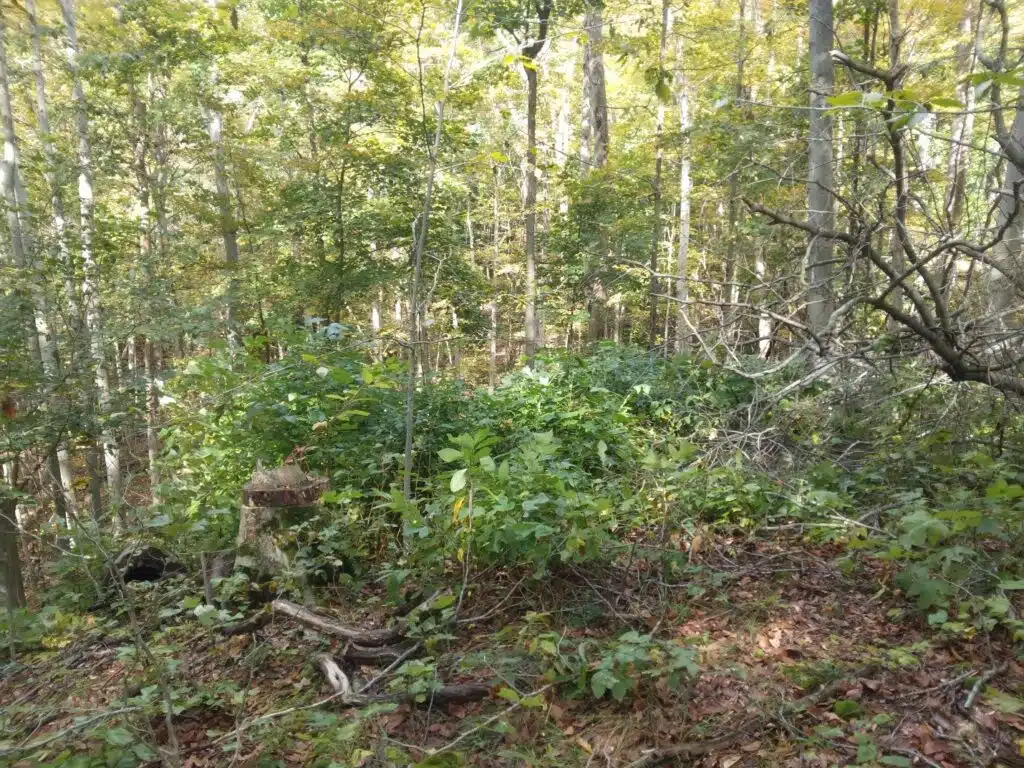Girdling and Invasive Species Management: A Recipe for Healthier Forests
January 29, 2024

We have over 2,000 acres of forest at Holden Arboretum. Our conservation department cares for these forests, with goals of improving their health and function. Several years ago, we initiated a forest management project aimed at enhancing the ecological function of existing young forests by introducing structural elements.
In the attached photo you will see the results of what tree girdling and continued invasive species management can accomplish. A simulated light gap was created in the forest by girdling several poorly formed trees in a small cluster. The girdling is a process used by foresters to kill undesirable trees. Once dead, the trees remain standing, creating a ‘snag’ which provides habitat for wildlife. As the tree dies it will begin to decay and fall apart. The smaller branches will fall to the forest floor creating woody ‘debris,’ providing shelter for small animals and nutrients as they decay. Eventually, the entire tree will fall, the trunk and larger remaining branches provide additional structure for wildlife. Dead trees are a natural part of forests and provide necessary structure and cover for wildlife and are essential to nutrient recycling.

Girdling trees provides yet another benefit: When done in a cluster, a hole in the forest canopy is created allowing additional light to reach the forest floor. In this case, the forest understory responded to the additional light with a flush of new growth. In the new gap, 8 species of tree saplings were observed growing in very close proximities, all competing aggressively for light. Only a few of the hundreds of these saplings will reach adulthood and fill in the canopy. Thanks to continued invasive species management within the area, this simulated light gap filled in entirely with native trees and shrubs. Not a single invasive shrub or vine was observed. The photo shows how management can enhance the quality and function of the forest by introducing added structural elements of snags, coarse woody debris, regenerating light gaps, and reduced threats posed by invasive plants.
Chad Knisley
Natural Areas Manager













